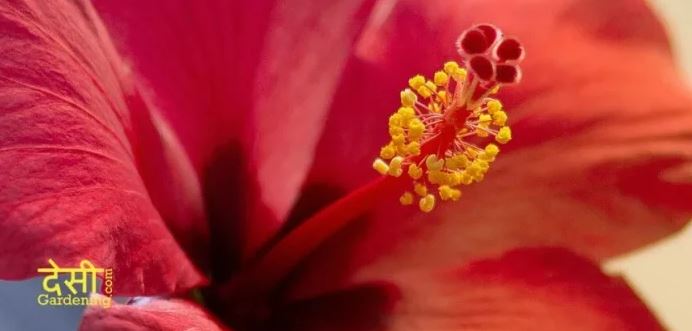Red hibiscus plants are a stunning addition to any garden, known for their vibrant red flowers and lush green foliage. In desi gardening, the red hibiscus holds a special place not only for its beauty but also for its cultural and medicinal significance. This article will guide you through the process of growing and caring for Red Hibiscus Plants, ensuring they thrive in your garden.
Why Choose Red Hibiscus Plants?
1. Aesthetic Appeal
Red hibiscus flowers are strikingly beautiful, adding a splash of vivid color to your garden. Their large, trumpet-shaped blooms can brighten any space.
2. Cultural Significance
In many cultures, especially in India, red hibiscus flowers are used in religious ceremonies and traditional medicine. They are often associated with the goddess Kali and are used in various rituals.
3. Medicinal Benefits
Hibiscus flowers are known for their health benefits. They can be used to make tea, which is believed to help lower blood pressure, boost liver health, and improve skin conditions.
Planting Red Hibiscus
1. Choosing the Right Location
Red Hibiscus Plants Information thrive in well-drained soil and need plenty of sunlight to produce abundant blooms. Choose a location in your garden that receives at least 6-8 hours of direct sunlight daily.
2. Preparing the Soil
Hibiscus plants prefer slightly acidic to neutral soil (pH 6.0-7.0). Enrich the soil with organic matter such as compost or well-rotted manure to ensure good drainage and nutrient availability.
3. Planting Process
- Dig a hole twice the size of the root ball of the hibiscus plant.
- Place the plant in the hole, ensuring the top of the root ball is level with the ground.
- Fill the hole with soil, gently firming it around the base of the plant.
- Water thoroughly to settle the soil around the roots.
Caring for Red Hibiscus
1. Watering
Hibiscus plants require regular watering, especially during the growing season. Keep the soil consistently moist but not waterlogged. In hot weather, you may need to water daily, while in cooler seasons, reduce the frequency.
2. Fertilizing
Feed your red hibiscus with a balanced, water-soluble fertilizer every 2-3 weeks during the growing season (spring and summer). Avoid high-phosphorus fertilizers as they can hinder blooming.
3. Pruning
Regular pruning helps maintain the shape of the plant and encourages new growth. Prune your hibiscus in early spring by removing dead or diseased branches and cutting back leggy growth.
4. Pest and Disease Control
Hibiscus plants can be prone to pests like aphids, whiteflies, and spider mites. Regularly inspect your plants and use organic insecticidal soap or neem oil to control infestations. Ensure good air circulation around the plants to prevent fungal diseases like powdery mildew.
Propagating Red Hibiscus
1. Cuttings
The most common method of propagating hibiscus is through stem cuttings. In late spring or early summer, take 6-8 inch cuttings from new growth. Remove the lower leaves and dip the cut end in rooting hormone before planting it in a pot filled with a well-draining potting mix. Keep the soil moist and place the pot in a warm, bright location. Roots should develop in a few weeks.
2. Seeds
While propagating hibiscus from seeds is possible, it is a slower process. Sow seeds in a seed-starting mix and keep them moist and warm until germination, which can take several weeks.
Conclusion
Variety of Hibiscus Plants are a beautiful and rewarding addition to any desi garden. With their striking flowers and numerous benefits, they are well worth the effort to cultivate. By following the guidelines outlined in this article, you can enjoy the beauty and benefits of red hibiscus plants in your garden.
Visit their website to learn more services:-





Comments